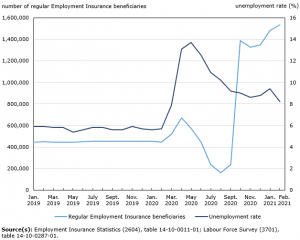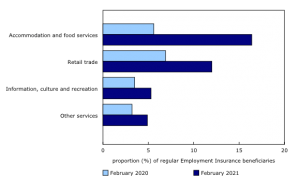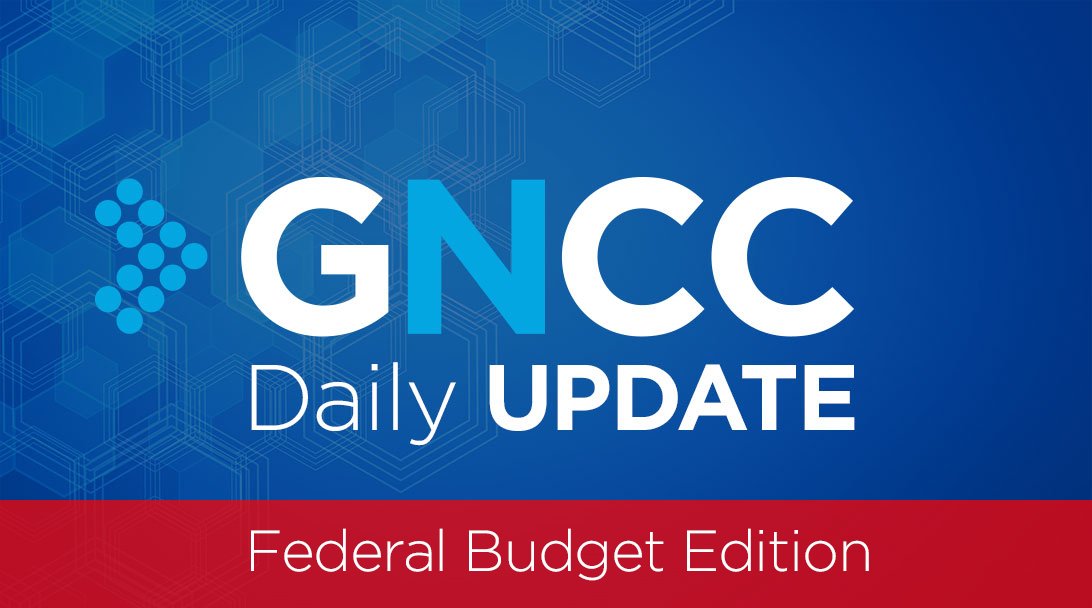
Health Canada authorizes Pfizer-BioNTech COVID-19 vaccine for children 12 to 15 years old
Today, Health Canada authorized the use of the Pfizer-BioNTech COVID-19 vaccine in children 12 to 15 years of age. This is the first COVID-19 vaccine authorized in Canada for use in children and marks a significant milestone in Canada’s fight against the COVID-19 pandemic.
Health Canada received an application to expand the indication of Pfizer-BioNTech’s COVID-19 vaccine on April 16, 2021. The vaccine was initially authorized for use in people 16 years of age and older on December 9, 2020.
After completing a thorough and independent scientific review of the evidence, the Department has determined that this vaccine is safe and effective at preventing COVID-19 when used in children between 12 and 15 years of age.
Ontario government investing $900,000 to protect and restore environment
The Ontario government is supporting community projects that help protect and restore the environment by investing $900,000 in grant funding through the newly enhanced Ontario Community Environment Fund. Funding for the grant is supported by environmental penalties, which are being expanded to cover a broader ranger of regulated facilities and environmental violations. This money can be used to help communities improve the environment in areas impacted by pollution.
Funding is available for projects that:
- Increase environmental restoration and remediation to repair environmental harm, e.g. tree planting, habitat restoration.
- Build resilient communities and provide local solutions to environmental issues, e.g. wetland creation and installing rain gardens to reduce the risk of flooding.
The fund is open to conservation authorities, municipalities, First Nation and Métis communities, non-profit organizations, schools, colleges and universities.
The deadline to apply for an Ontario Community Environment Fund grant is 5 p.m. on June 23, 2021. Applications will be evaluated through a competitive process. Successful projects will be notified directly in summer 2021.
Welland seeks public engagement for cannabis land use review
The City of Welland is reviewing its current Zoning By-law requirements (PDF link) as they relate to cannabis operation purposes and ensure that the City’s policies are in line with current Provincial and Federal legislation and municipal best practices as per Council’s direction. The City is currently under a freeze on cannabis production, cultivation, and processing operations until December 17, 2021. Stakeholders are encouraged to visit YourChannel to provide feedback and share experiences with Cannabis Production Facilities.
Ontario Chamber of Commerce (OCC) and Canadian Manufacturers & Exporters (CME) oppose motions calling for phase-out of gas-fired power generation
The Ontario Chamber of Commerce (OCC) and Canadian Manufacturers & Exporters (CME) released a statement today in response to motions calling for the Government of Ontario to eliminate gas-fired electricity generation. The OCC and CME are urging the Ontario government not to phase out gas-fired electricity so that industry can adequately balance environmental and economic objectives in Ontario.
The OCC and CME firmly believe Ontario needs a well-balanced energy system. Electricity only accounts for about 3 percent of Ontario’s emissions, with the main sources being transportation, industry, and buildings. Currently, natural gas is the only resource capable of meeting peak demand periods year-round. New nuclear, renewable energy, energy storage, and other assets may all be part of the solution in the future. Until then, demand growth over the next decade will require flexible assets that can be readily deployed, particularly as the economy expands and nuclear generators undergo refurbishment. Replacing the more than 11,300 MW of transmission-connected gas-fired generators in Ontario by 2030 – or nearly a third of total installed supply capacity across the province – will cost in the tens of billions of dollars for businesses and residents.
Canadian Camber of Commerce demands travel restart strategy
The Canadian Chamber of Commerce wants Canadian governments to set out their plans for safely restarting travel, including for how health credentials will be used.
The Chamber outlined key elements that need to be included in any strategy, including clear metrics for targeted travel restrictions, coherent rules across all modes of transportation, and replacing broad quarantine measures with regulations based on a combination of testing, vaccination and other measures to protect public health.
The Chamber noted that the world is adopting new systems to document travelers’ health status, including digital vaccination certification. Canada needs to accelerate its efforts to catch up and to enable a speedy and safe resumption of economic activity.
Reading Recommendations
When will the Canada-U.S. border reopen?
Priscilla Hwang, CBC News
Travel across the Canada-U.S. border could resume by late summer or fall, according to the cautious estimates of some experts, but they say the process will be complicated.
The border has been closed to non-essential travel like tourism and recreation since March 2020, and the closure agreement between Ottawa and Washington is expected to be renewed on May 21.
The agreement makes exceptions, for example, on compassionate grounds like attending a funeral, or to apply for refugee status, and enforcement has been less than absolute.
But the question on most people’s minds, says foreign policy expert Aaron Ettinger, is probably “When can I do my day trips over the border once again?
Facebook’s Trump ban upheld by Oversight Board for now
BBC News
Donald Trump’s ban from Facebook and Instagram has been upheld by Facebook’s Oversight Board.
But it criticised the permanent nature of the ban as beyond the scope of Facebook’s normal penalties.
It has ordered Facebook to review the decision and “justify a proportionate response” that is applied to everyone, including ordinary users.
The former president was banned from both sites in January following the Capitol Hill riots.
Niagara COVID status tracker (April 28)
Niagara’s most up-to-date COVID statistics, measured against the targets for the various stages of the Ontario COVID-19 Response Framework, are presented below. This does not predict government policy, but is offered to give you an idea of where Niagara is situated and how likely a relaxation (or further restrictions) may be. These data are the most recent published by Niagara Region. The Grey-Lockdown level does not have its own metrics, but is triggered when the COVID-specific measurements in a Red-Control region have continued to deteriorate.
The Province of Ontario is currently under a stay-at-home order. The COVID-19 Response Framework does not apply during this order. Click here to review the restrictions currently in place.
▲: Metric has increased since last published measurement
▼: Metric has decreased since last published measurement
— : Metric has not changed since last published measurement
| December 18 | December 25 | January 1 | January 8 | January 15 | January 22 | January 29 | |
|---|---|---|---|---|---|---|---|
| Reproductive number | 1.4 | 1.8 | 1.4 | 1.1 | 1.0 | 0.7 | 0.9 |
| New cases per 100,000 | 101.2 | 267.3 | 469.8 | 575.8 | 507.1 | 295.5 | 250.6 |
| New cases per day (not including outbreaks) | 60.7 | 178.7 | 311.7 | 376.9 | 325.4 | 182.7 | 145.7 |
| Percent of hospital beds occupied | 97% | 95.2% | 98.2% | 103.2% | 104.5% | 103.6% | 106% |
| Percent of intensive care beds occupied | 78.8% | 77.3% | 87.9% | 87.9% | 90.9% | 89.4% | 93.9% |
| Percentage of positive tests | 6.1% | 15.6% | 28.1% | 28.6% | 26.6% | 21.2% | 16.2% |
Definitions:
- Weekly Incidence Rate: the number of new COVID-19 cases per 100,000 people per week
- Percent Positivity: the number of positive COVID-19 tests as a percentage of all COVID-19 tests performed
- Rt: the reproductive rate, or the number of people infected by each case of the virus
Niagara COVID vaccination tracker (May 4)
Niagara’s most up-to-date vaccination numbers are presented below, along with comparison data from Ontario, Canada, and G7 countries.
Total doses administered in Niagara: 191,097
Total doses administered in Niagara since yesterday: 2,456
| Percentage of population with one dose | Percentage of population fully vaccinated | |
|---|---|---|
| Niagara | 82.7% | 78.2% |
| Ontario | 84.6% | 79.1% |
| Canada | 84.7% | 78.6% |
| United States | 75% | 64% |
| United Kingdom | 78% | 72% |
| Germany | 76% | 74% |
| France | 80% | 77% |
| Italy | 83% | 76% |
| Japan | 80% | 79% |
| World | 63% | 53% |
Data are drawn from Niagara Region, the Government of Ontario, and Oxford University’s Our World in Data project.







